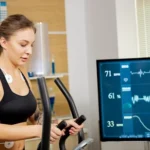ACLS, or Advanced Cardiovascular Life Support, is a set of emergency procedures. These procedures are used to treat cardiac arrest, stroke, and medical emergencies that are life-threatening.
Adenosine is a medication used in ACLS. It works by stopping abnormal electrical signals in the heart temporarily. This helps to restore normal heart rhythm when the victim experiences irregular heartbeats. The dose for adenosine is given intravenously. So, for healthcare providers who manage cardiac emergencies, understanding the basics of ACLS adenosine is crucial. Let us explore this further.
How does adenosine work in ACLS?
Adenosine plays a crucial role in ACLS by stopping abnormal heart rhythms for some time. Here’s a breakdown of how it works:
| Action | Explanation |
| Blocks AV node | Slows down conduction through the atrioventricular (AV) node, and interrupts reentry circuits in supraventricular tachycardias. |
| Shortens tachycardic episodes | Briefly interrupts the arrhythmia. It allows the heart’s natural pacemaker to reset and restore the normal rhythm of the heart. |
| Rapid onset, short duration | Administered quickly via IV push, adenosine acts quickly. It is rapidly metabolized which reduces adverse effects. |
| Potential side effects | Temporary side effects include flushing, chest discomfort, and dyspnea which usually resolves within a few seconds. |
What are the typical doses of adenosine?
Adenosine is given in specific doses for managing cardiac arrhythmias. Here are the adenosine drug dosages:
Initial Dose:
It is administered as a rapid intravenous bolus of 6 mg.
Secondary Dose:
A second dose of 12 mg may be given if the initial dose fails to restore normal rhythm.
Pediatric Dosing:
Children usually receive initial doses of 0.1 mg/kg, up to a maximum of 6 mg, followed by a 0.2 mg/kg dose if necessary.
Read more: Ventricular Fibrillation: Causes, Symptoms, and Treatment
What is the mechanism of action of adenosine?
The mechanism of adenosine blocks conduction through the atrioventricular (AV) node. This interrupts reentry circuits in supraventricular tachycardias. This blockage leads to a brief stoppage of the arrhythmia. This allows the natural pacemaker of our heart to reset. Adenosine dose is given rapidly via intravenous push, which is then quickly metabolized. This adds to its short duration of action. It can sometimes cause temporary dyspnea.
What are the key points to remember about adenosine dosing?
Here are the key points to remember when giving a dosage of adenosine
Rapid IV Bolus:
Administer as a rapid intravenous bolus.
Initial Dose:
Start with 6 mg for adults.
Secondary Dose:
If needed, a second dose of 12 mg may be given.
Pediatric Dosing:
Adjust doses based on weight, starting with 0.1 mg/kg.
Flush IV Line:
Follow each dose with a rapid saline flush to ensure medication delivery.
Titration:
Titrate the dose in patients who have sensitivities or cardiovascular disease.
Monitor Closely:
Monitor patient response and vital signs during administration regularly.
How does adenosine differ from adenosine in ACLS?
Here are the differences between adenosine and amiodarone
| Point of Comparison | Adenosine | Amiodarone |
| Mechanism of Action | Blocks AV node conduction briefly | Blocks multiple ion channels, prolonging action potential duration |
| Onset of Action | Rapid onset, short duration | Slower onset, longer duration |
| Route of Administration | Rapid IV bolus | IV bolus or infusion |
| Primary Use | Supraventricular tachycardia | Wide range of arrhythmias |
| Side Effects | Flushing, dyspnea, transient | Wide-ranging, including pulmonary toxicity and thyroid dysfunction |
| Dosage | Generally 6 mg, with an optional 12 mg dose | Varied dosing based on arrhythmia and patient condition |
What are the important considerations in administering adenosine during ACLS?
Administering adenosine during ACLS needs adherence to specific considerations:
- Verify the patient’s weight for accurate dosing.
- Prioritize rapid intravenous administration.
- Follow each dose with a saline flush.
- Vigilantly monitor for adverse reactions.
- Prepare for potential side effects promptly.
- Adjust dosing cautiously in high-risk individuals.
Read more: Supraventricular Tachycardia: Causes, Symptoms, and Treatment Options
Conclusion
Giving ACLS adenosine requires precise dosing, quick administration, and close monitoring for possible side effects. Responders should be ready to act swiftly if reactions occur and adjust adenosine doses carefully for vulnerable patients. Following these steps ensures adenosine is used effectively and safely, improving chances of success in treating cardiac rhythm issues during emergencies.
Resources
https://www.ncbi.nlm.nih.gov/books/NBK519049/
https://www.ncbi.nlm.nih.gov/pmc/articles/PMC4863639/
https://acls-algorithms.com/acls-drugs/acls-and-adenosine/
https://www.ncbi.nlm.nih.gov/pmc/articles/PMC8790832/






